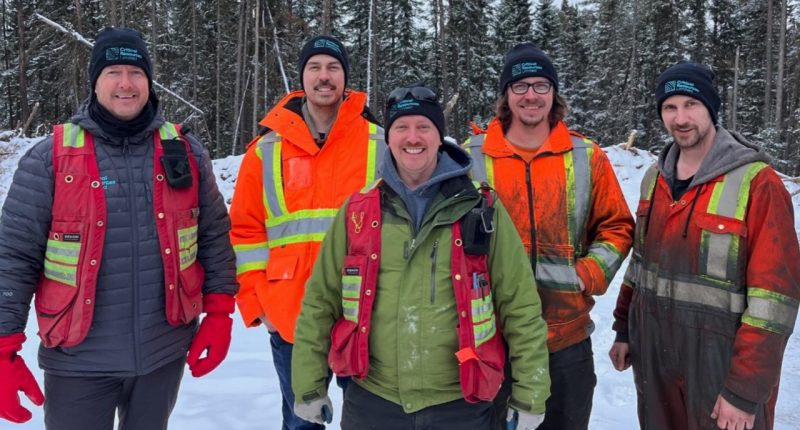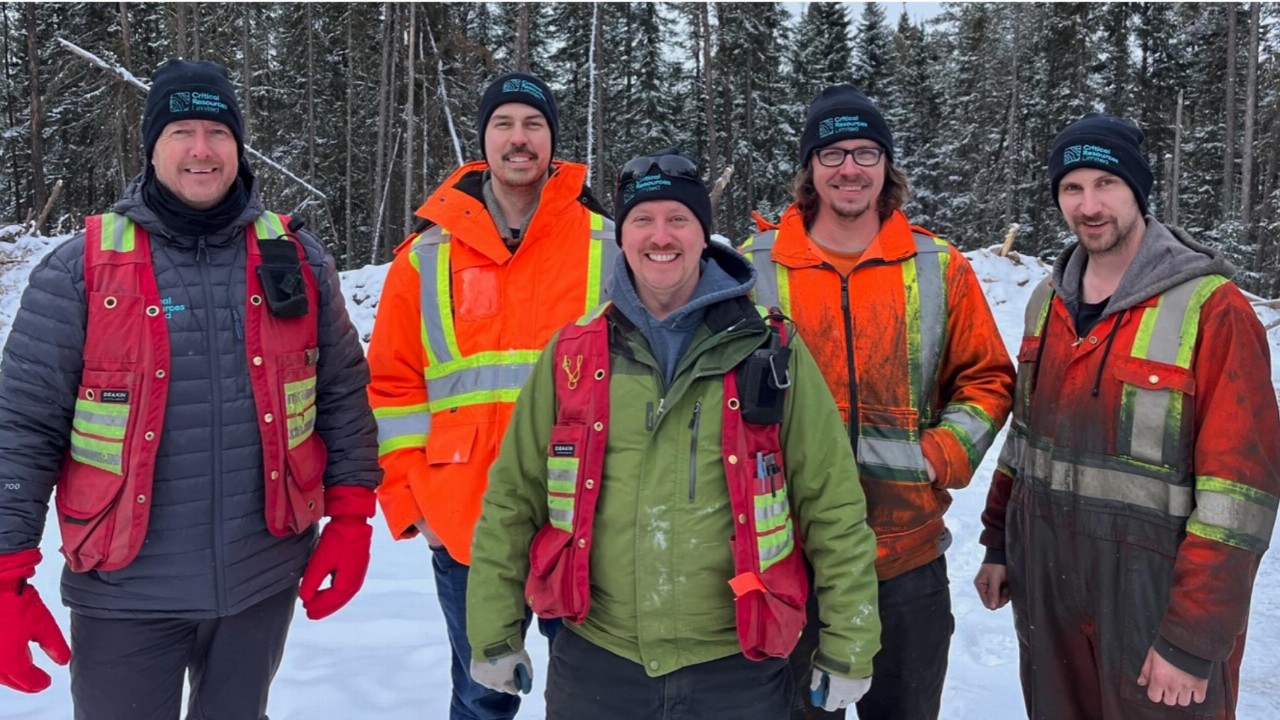- The 2022 energy crisis has accelerated the move towards cleaner energy
- Renewable energies depend on ‘critical’ minerals such as manganese, cobalt, rare earths and lithium
- The Canadian and United States governments have committed to developing North American critical minerals capabilities — backed with solid investment
- A key critical mineral is lithium, and demand is currently well short of supply — a bonus for investors and lithium mine developers.
- Critical Resources (CRR) is well-placed to take advantage of the desire for localised supply and current market conditions
- The company’s Mavis Lake project is looking to repeat the “exceptional” results achieved in 2022 in this year’s extensive drilling and development program
- Having delivered remarkably high-grade, low-impurity spodumene concentrate in its first batch of metallurgical testwork, CRR is buoyant as to this year’s prospects
The energy shock
The world has been through several shocks in recent years, and one of the larger and more far-reaching of these is the energy crisis that developed in the aftermath of Russia’s invasion of Ukraine.
Governments all over the world are reassessing their energy sources, usage and futures — and the move away from fossil fuels and into cleaner energy sources has greatly accelerated.
The role of critical minerals
In seeking cleaner energy sources, governments are turning to renewables like wind, solar and wave energy. But one of the challenges with renewables is that they are, of course, intermittent.
There are days when the wind doesn’t blow, and solar production is limited to those periods of the day when the sun is shining.
The solution to the intermittency of renewables is the development of high-efficiency energy storage mediums — in other words, batteries.
The construction of batteries — and many energy capture and usage devices including wind turbines, solar panels, EV motors and semiconductors — requires a range of ‘critical minerals’, from rare earth elements to metals such as gallium, nickel, zinc, titanium, vanadium, and the headline act — lithium.
Canada’s commitment to critical minerals
The Canadian government, recognising the pivotal role that critical minerals will play in advancing its green energy goals, in late 2022 launched a C$2.8 billion Critical Minerals Strategy, outlining its “whole of government approach to critical mineral development”.
As the Canadian government says in its Strategy: “Critical minerals are the building blocks for the green and digital economy. There is no energy transition without critical minerals: no batteries, no electric cars, no wind turbines and no solar panels.”
Canadian Minister of Northern Development, and Indigenous Affairs, Greg Rickford in the Ontario Critical Minerals Strategy 2022-2027, wrote: “Our government’s vision for Ontario’s mining sector is to transform it into a leading producer of critical minerals. The Critical Minerals Strategy is our roadmap for driving this transformation and ensuring that Ontario takes its rightful place in the global supply chain for the economy of the future.”
If any country is going to achieve its objectives in this direction, it will be Canada.
A vast country, it is generously endowed with mineral resource wealth and long-standing mining expertise, and it boasts an advanced manufacturing sector.
Politically, it is stable, with an open economy and governance structure, and its government offers strong ESG credentials.
And along with its own solid domestic market, its US neighbour to the south represents one of the world’s biggest and fastest-growing markets for critical minerals; the United States and Canada are both in the top ten vehicle sales markets worldwide, with significant growth in electric vehicle manufacturing and market share expected over the next decade.
Lithium – the leading light
Ask 100 people to name just one “critical mineral” involved in the production and operation of green and renewable energy, and it’s a fair bet that the majority will answer, “lithium”.
After all, we’re all familiar with the lithium batteries that power electric vehicles (EVs) as well as our phones, cameras, and home-based solar energy storage installations.
Lithium’s inherent light weight and high energy density make it a fundamental and irreplaceable mineral for the green revolution, and the lithium-ion battery supply chain’s capacity to support a green energy movement and a decarbonised economy makes it a growth industry.
Investors who sat through years of doldrums in the lithium market are now being rewarded for their patience as the lithium supply fails to keep pace with demand, and prices for the metal have undergone a spectacular rise in the last year or so.
Like other commodity prices, the lithium price is subject to cyclical rises and falls, although the lithium price cycle appears to be shorter than most other materials. However, the general trend is upward, and leading price-reporting agency Fastmarkets said “increasing and sustained demand will strain supply through 2030”, so it’s difficult to foresee a significant price drop in the medium term.
While exploration for new supply is increasing, the timelines for discovery and project development, as well as the development of downstream processing, ensure that for the foreseeable future, demand will outstrip supply and keep prices at rewarding levels for producers and investors.
The Canadian Mining Journal put it rather bluntly in a September 2022 article, declaring: “It is fair to say the strong demand for lithium suggests new projects will be very lucrative.”
Critical Resources – well-named, well-placed
One of those new projects referred to by the Canadian Mining Journal is operated by an Australian company in the tier-one mining district – and emerging lithium hub – of Ontario, Canada.
Critical Resources (CRR) has a vision to advance and develop critical minerals projects in support of the decarbonisation of the global economy, and the Mavis Lake project is its flagship.
CRR is one of several companies meeting with success in the area, a number of which share a common theme: their executive teams consist in part of professionals with extensive experience in lithium project development and operations, having come from Pilbara Minerals and Altura Mining.
Critical Resources has produced what Managing Director Alex Cheeseman calls “exceptional high-grade, low-impurity spodumene concentrate” from its first tranche of metallurgical testwork through 2022. The company is now well on its way to completing its JORC 2012-compliant maiden mineral resource estimate (MRE).
Mr Cheeseman told The Market Herald the results were extremely encouraging, even though to date all drilling efforts had covered just one per cent of the total land available for exploration.
“We completed over 19,500 meters of drilling in 2022, and I’m very pleased to say that we presented some of the highest lithium assay results reported by any ASX-listed hard rock lithium company,” Mr Cheeseman said.
The company plans to complete a minimum of 20,000 metres of drilling across the project in 2023, with further exploration also being planned for the newly-acquired Gullwing Tot Lakes mining claim adjoining the Mavis Lakes project.
Mr Cheeseman said CRR had made significant progress in its bid to transition from explorer to lithium developer, with baseline environmental studies underway in addition to the ongoing metallurgical work.
“2023 is the year we make huge strides into our future,” he said.
Mr Cheeseman said that potential investors would be welcome to learn more about the company and its projects at the Critical Resources East Coast Roadshow, being held in partnership with Battery Age Minerals (BM8) and Equinox Resources (EQN) towards the end of the month.
“We are incredibly excited with the way our projects have been developing, and we’ve put together a complete package to help investors understand the scope of our potential and how we intend to realise it,” Mr Cheeseman told The Market Herald.
“We’d love to see anyone who is interested in participating in the worldwide lithium phenomenon at one of our roadshows, and we’ll be very happy to answer any questions they may have.”
Critical Resources East Coast Roadshow 2023, in partnership with Battery Age Minerals and Equinox Resources:
- Tuesday March 28 – The Westin, Melbourne -15:30 AEDT Register Here
- Wednesday March 29 – Sheraton on the Park, Sydney -15:30 AEDT Register Here








